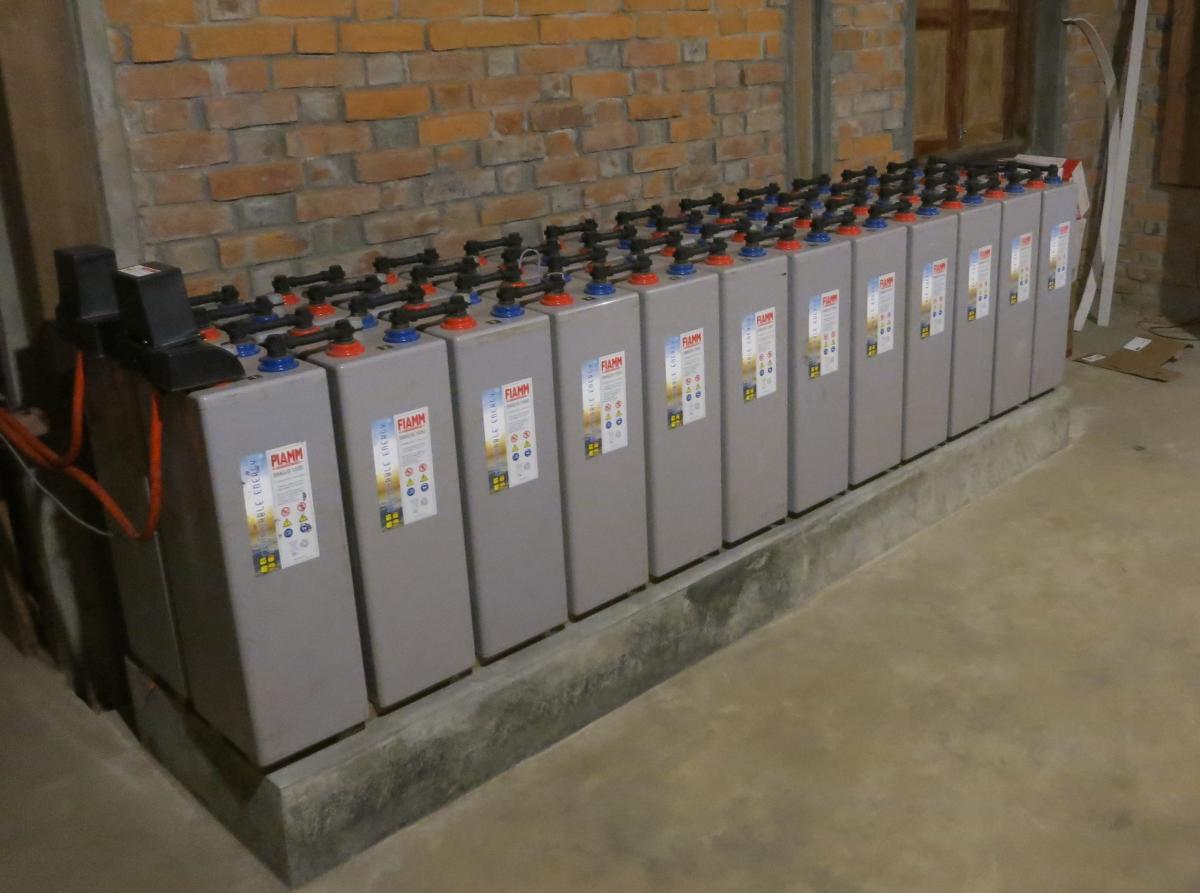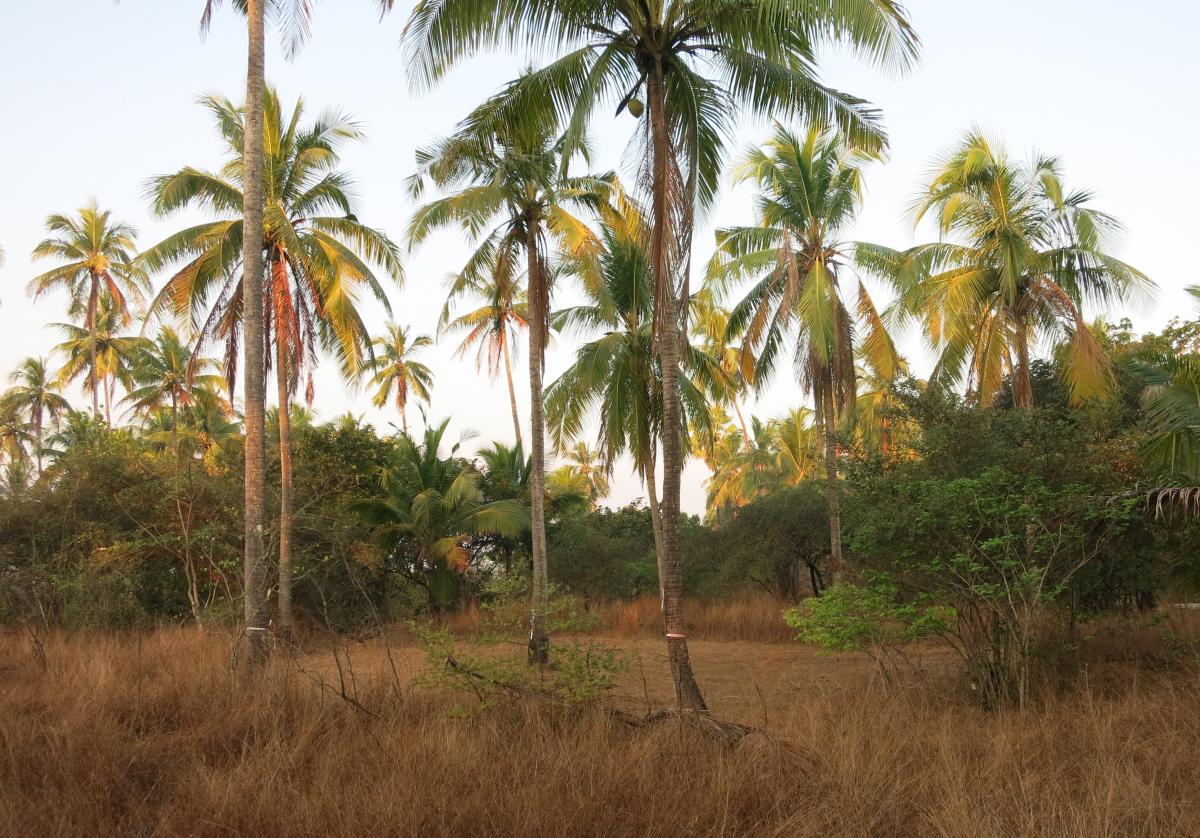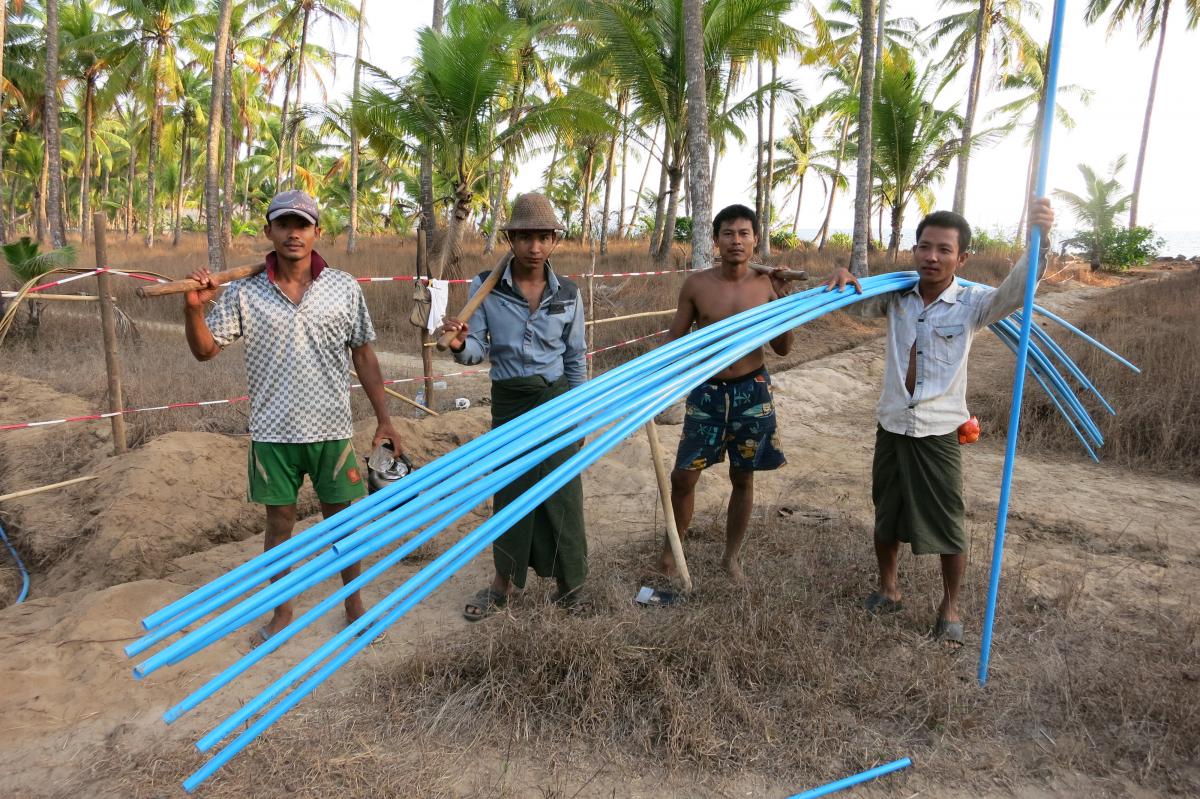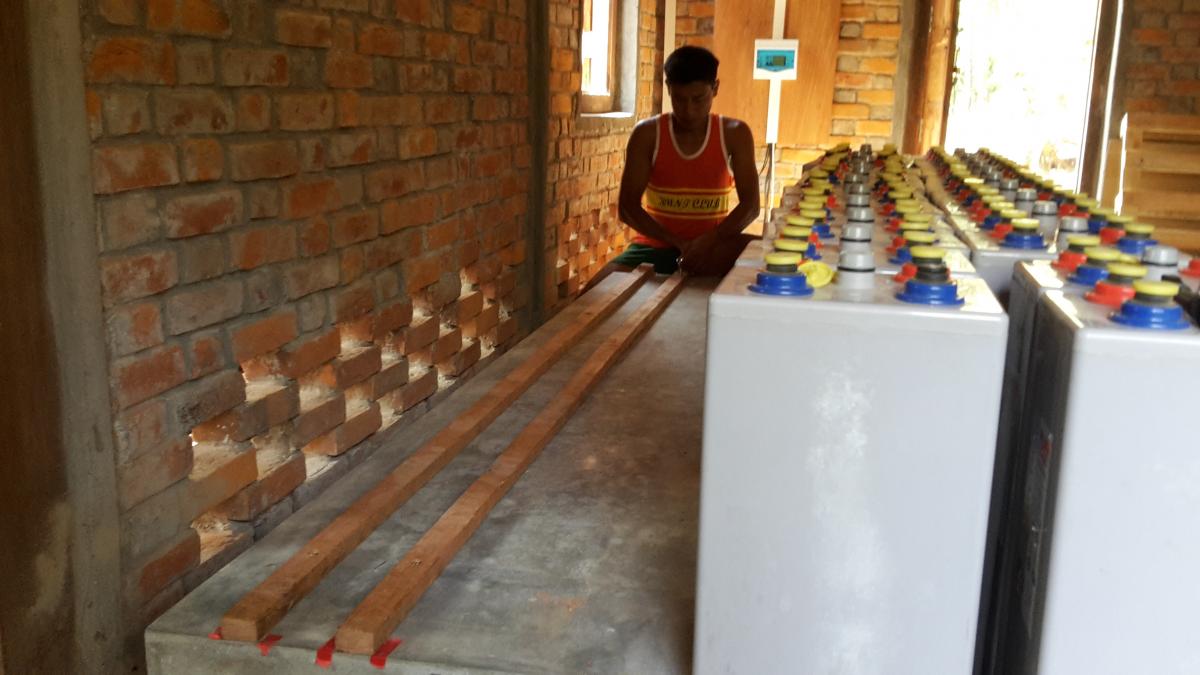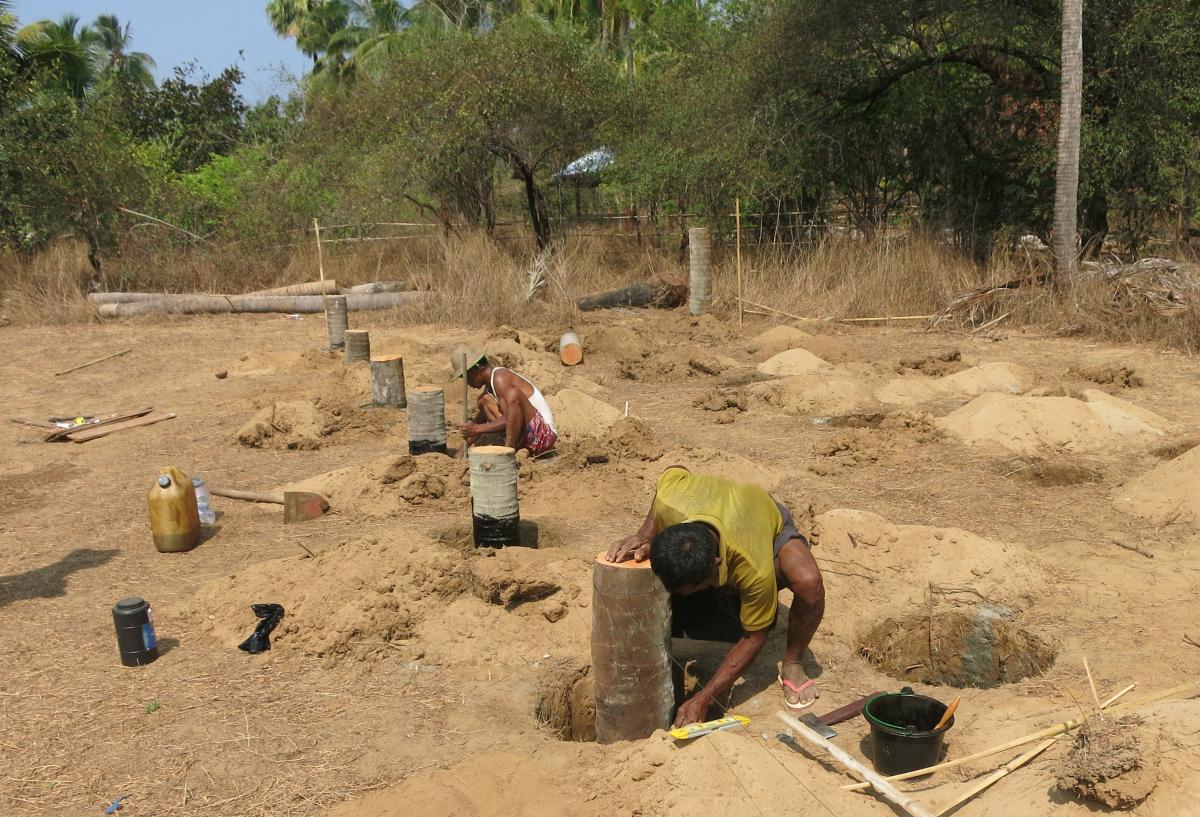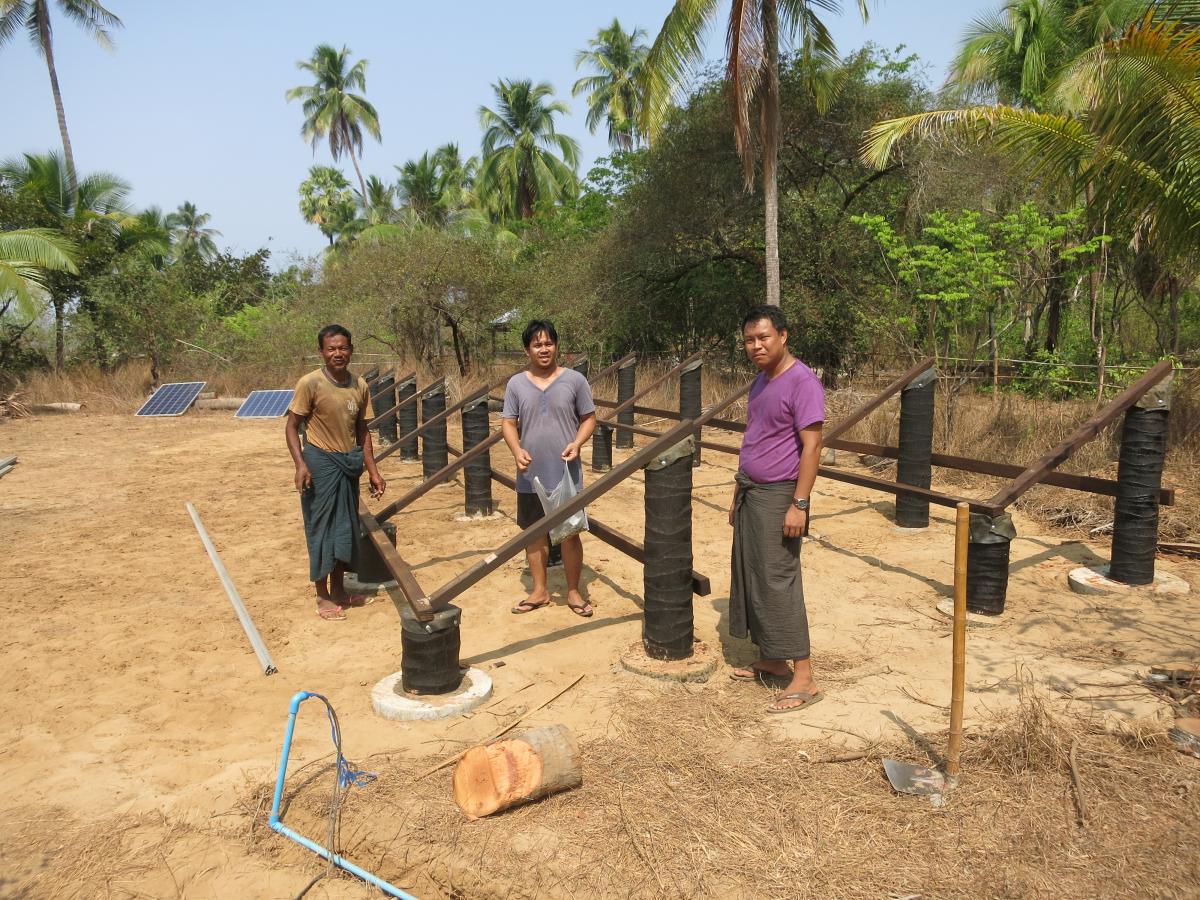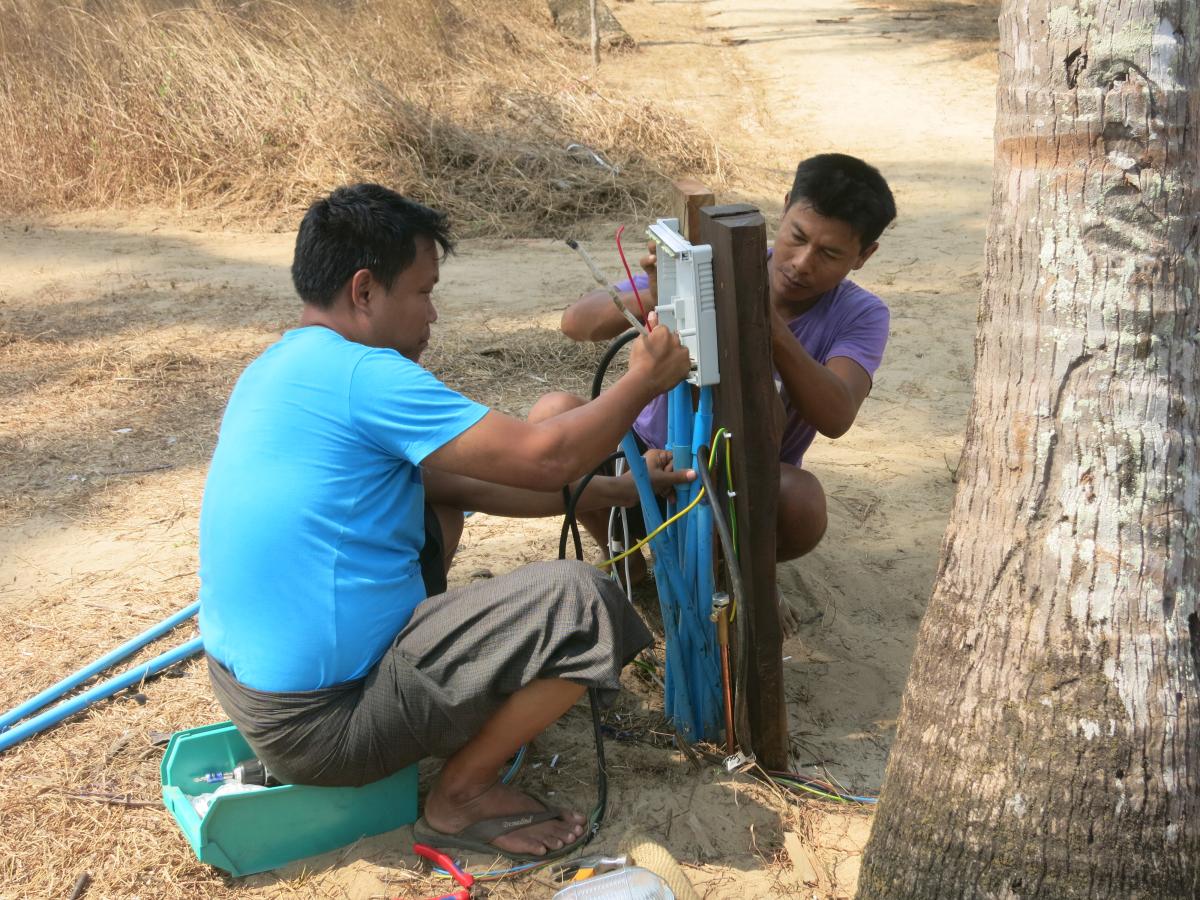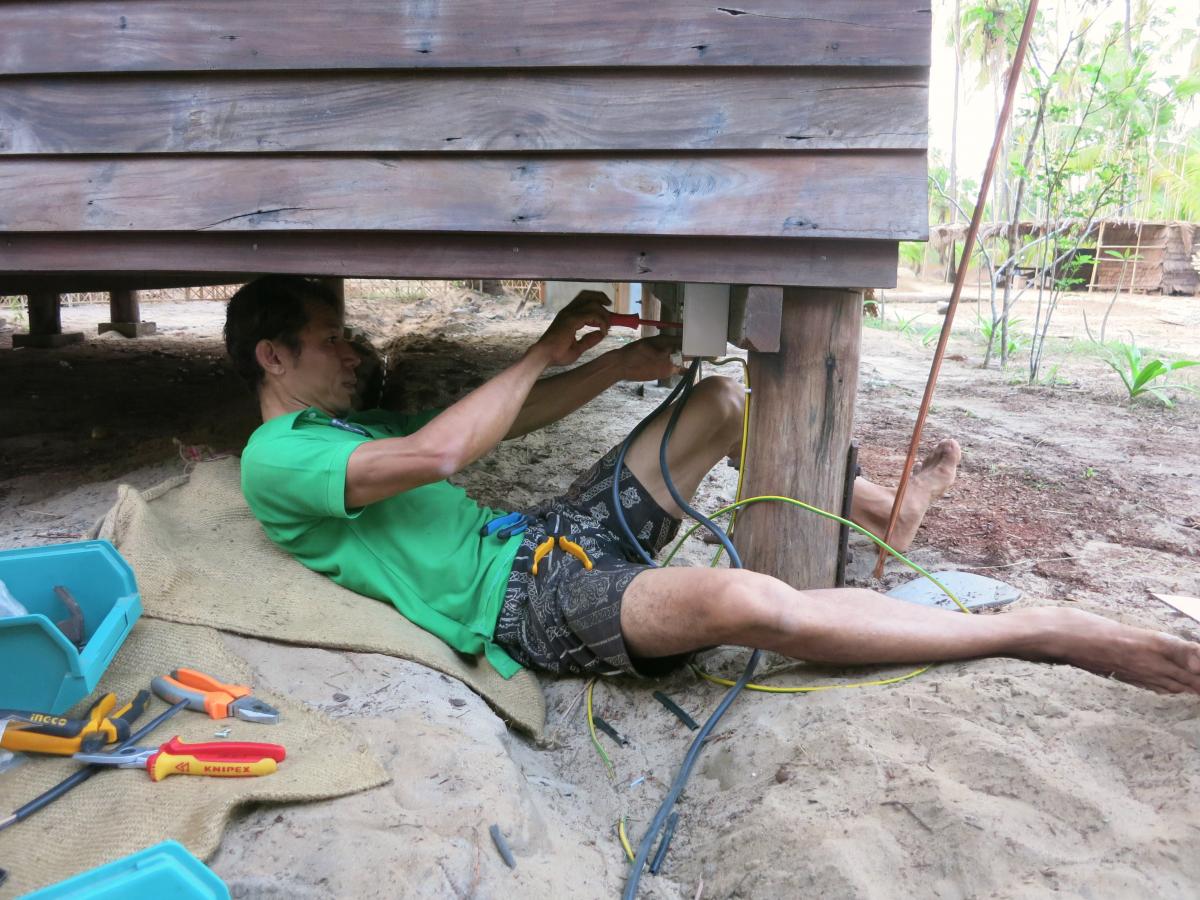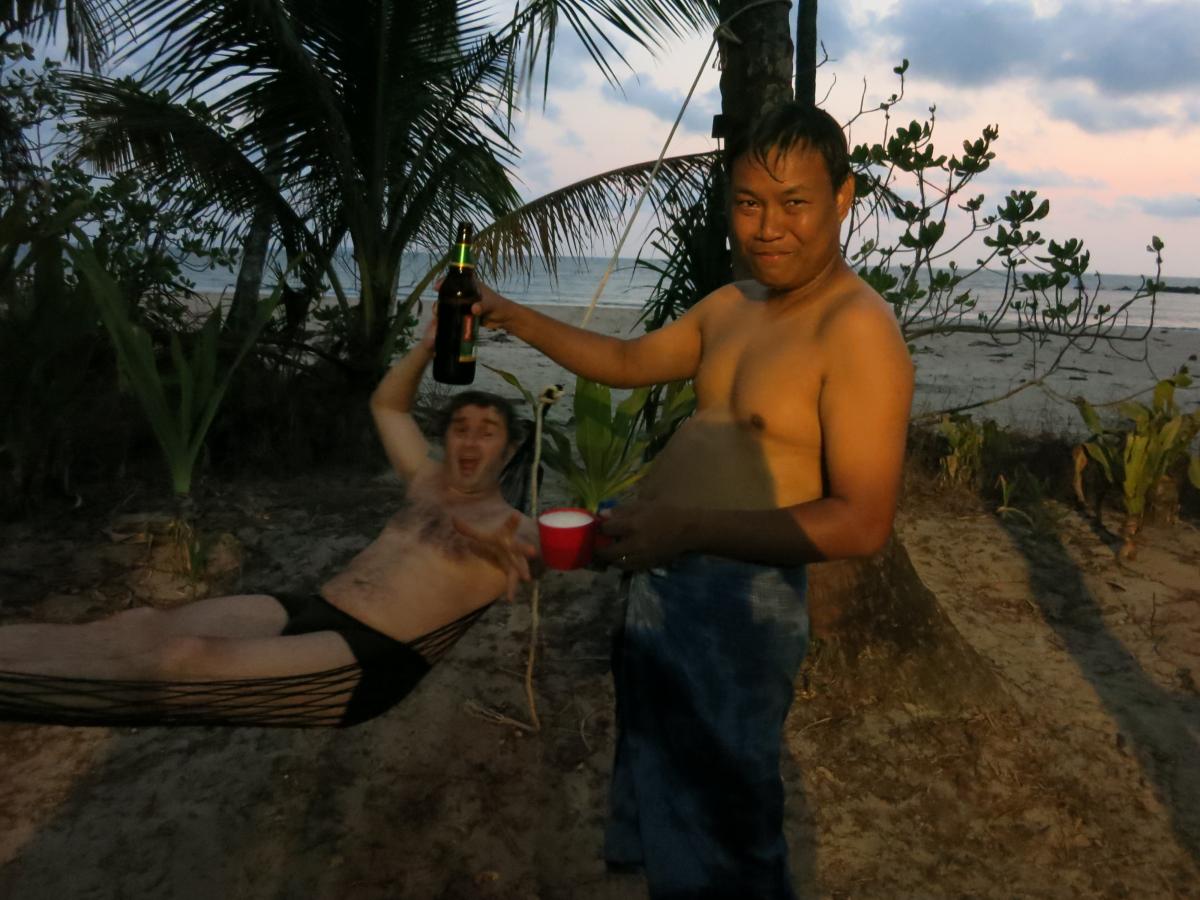
Why oh why did we as an Eco Lodge decide on investing lots of money in a rather large solar power system instead of just giving power in evenings for three hours with small-scale devices? And why didn't we go for a totally candlelit-only, very simple lodge concept? This blog post illustrates our process. It shows where we started off and gives some insights into the indistinct factors that influenced our decisions. We hope this post may be helpful to others playing with the idea of installing a solar system in a far away place - like ours is.
Our brand new solar system - and how it works
Our system can produce 30 kWh per day, which corresponds to the estimated maximum consumption needed when our lodge is fully booked. It consists of 24 x 250W (=6kWp) solar panels linked up with a 24 x 1550 Ampere hour battery bank by Fiam, Italy at the other end. In between them are the "captains", the three inverters by SMA, Germany, that convert DC to AC current and coordinate the system.
During the day, the two Sunny Boy panel inverters measure and coordinate the solar power yield from the panels. Simultaneously, the Sunny Island master inverter directs the power to immediate end-users and ensures that maximum draw at one given moment does not exceed the capacity of our system. It masters the recharging of the battery bank and continuously controls its discharge level.
The battery bank, the most expensive part in our system, firstly provides power to make it through each night. Secondly, if the weather is cloudy and rainy, it covers those power needs exceeding the amounts the panels are able to produce on such days. The bank comes with a capacity of one full extra-day. This means with little power produced on a given rare grey day, the battery bank can fully provide us with one 24h daily load.
This may sound quite limiting at first. Well, high-end batteries are the most expensive part in a fully independent solar system. As we take into account a gradual increase of guest numbers over the first few years from our opening, we believe we can manage well with just only one full day of "full-occupancy-reserves". From November onwards, the sun reliably shines until nearly the end of May. Also, if needed the batteries can be recharged with a small back-up generator. We don't really want to buy nor use one unless proven wrong.
In the beginning there was...darkness
Three years ago, we started out by making a first power estimate that was completely over the top. We estimated power consumption for an eleven-guestroom lodge with restaurant-kitchen, staffrooms and a separate reception building to be 87 kWh per day! We then got in first quotes from some larger local and one international solar companies with costs ranging between 120'000 - 150'000 US$ for turnkey solution systems. This left us dumbfounded....but we were resolved to get there somehow. We had to rethink guest behaviour and readjust our estimates to get to a more realistic figure of what guests and staff would really be using per day. After all, you are not going to stay in an Eco Lodge consuming more energy than you do at home!
Know your machines!
We sat down again recalculating, making various tests with washing machines, irons and other electrical devices in order to understand their power draw and their total power consumption. Regarding washing machines we decided to use models that would allow solar water heater supply. This would reduce their power consumption dramatically. Neither water boilers nor instant water heaters or electrical cooking devices will be found on our premises as they are a no-go in fully solar powered places, drawing on just too much power. We decided to invest in a 15m high water tower rather than stressing our power plan with high-consumption water pressure pumps. And with some expert advice we finally arrived at a new max. consumption of 38 kWh per day.
Networking
Through our contacts with GIZ Myanmar , the German development agency, we were able to get in touch with Heye and Angela, the co-owners of Travessia Lodge in Mozambique. Their lovely costal lodge is similar in size to what we had in mind and successfully runs on solar power. Heye was extremely open and kind to share both details of how they planned the system as well as its total costs. He highlighted the importance of getting the best quality key equipment from Germany right away and shared with us some of the challenges he was facing when importing these to his country. Last but not least, he introduced us to the German solar expert Harald Olk who had planed and surveyed the installation process of their system. Heye added: "We never had one single power failure and not once did we have to switch on our generator! Our power supply has been working like a Rolls Royce."
Recalculate
We contacted Harald and found him to be amicable, as well as a real expert with years of experience of planning and installing solar systems for the public and private sector throughout rural Africa. Harald was interested in our project and also keen to get to know Myanmar. Sitting down with him, we then initiated final rounds of recalculation, which eventually got us to our present estimated max. 30 kWh per day.
Step 1 - Site evaluation
Since Arakan Nature Lodge really is an authentic place of beauty and peace it was clear that we would not want to have the solar panels anywhere on the naturally thatched houses nor within the beautiful gardens of our beach front land. Our coconut grove there provides lots of cooling shade unfit for good power yields. Panels should be as shade-free as possible.
Consequently, we identified a panel area at the rear of our land where fewer coconut trees grow. We also decided to build a centralized system. In doing so we had to mind distances between panels and inverters, which should be short. Also, the distances to cover from inverters/battery bank at the powerhouse to the end users had to be minded mainly for cable quality reasons. Those distances range up to 200 meters on our site. Thus, we choose a perfect spot for the ground mount panel array's maximum efficiency.
Quality cables are key in order to minimize losses in power distribution. After long net-searches in Bangkok and China, we found our cables made in Spain right here in Yangon. Harald was about to arrive as well for his first site evaluation visit. The cables were laid out and buried according to his suggestions and with his help right then, which, together with our village team, was great fun to do.
Step 2 - Resourcing
Once Harald had designed our system and the best single components were identified, we started looking out how and from where we could best get them in. We had decided against a turnkey solution to save money, right? Also, we were looking for a local solar company that would still do the installation with us once our components had arrived on site. This brought us in touch with Myanmar Solar Co. Ltd. Both Than Aye and Kyaw Min Tun agreed to assist us in our "self-made" approach. Myanmar Solar provided us with 24 Ying Li solar panels from their warehouse in Yangon.
The three SMA inverters came from ecoSprize in Bangkok whereas the 24 (70kg/each) Fiam batteries were ordered through ABO Chiang Mai. Good solar batteries should be "freshly manufactured" if they are to last long. Their order in Italy had a lead time of two months. But just how would these heavy blocks be transported from Bangkok to Yangon? By truck, and it happened! Once we knew they were on the way, our Aung Soe Paing travelled to Yangon to wait at the cargo bus gate, the agreed point of delivery. The sealed batteries were then unloaded one by one and carefully stowed inside the grumpy old cargo bus that runs between Yangon and Gwa. And lo! Just two days later we could pick them up with our good old Ford Ranger at the Gwa station. Sounds easy just pick them up! It was four men per one pick. And our car had never carried such a boring looking assemblage of heavy goods before. As we were loading twelve of them up, it became obvious our good vehicle was in desperate need of extra air if we were to go anywhere at all. After a good pumping session we drove out of Gwa, feeling relieved, if not ....victorious!
Step 3 - Installation
With Harald arriving for his second time and Kyaw Min Tun with his 24 panels on his way to Gwa, installation could go ahead. During winter months when the sun is lower, we had seen that the solar panel area was still not shadow free. We sadly had to cut five coconut trees down.
Our village's master carpenter team constructed ground mount poles out of their sturdy trunks to honour the cut trees with usefulness. Each trunk-pole got a tiny concrete foundation and a good coating of wood protection to better withstand pests and the seasons. Their open tops were covered with old car tyre rubber to prevent rains from penetrating from above. Then a frame with recycled Pienkato wood was laid out, on which the panels could be fixed with two Schletter aluminium rails. Of course the panel angle had to be right. We went for a tilt of 30 degrees as this would maximise solar yields during the high season from November till February.
The rest of the installation involved great teamwork over ten days. Two of our village's men who had some electrical and technical background were part of the installation team meaning they could increase their skills and knowledge in this regard.
And lo! The first time we were able to switch lights on, this is what happened on the other end of our cable lines, near the sockets:
Thanks
Today, after all these many magical nights with just fireflies or the moon and stars to light us, but also after months in the dark with countless headaches how to really get the high-end solar components into the country and to our remote location, the job is finally accomplished!
We thank Myanmar Solar and Harald Olk for their openness to co-operate and work together. We are also grateful to GIZ for their part in supporting our endeavour to become Myanmar's first fully solar powered Eco Lodge.
Of course we hope that other entrepreneurs in the field of tourism will be keen on learning from our facts and figures to build new businesses on green power. In an effort to promote a more sustainable way of life, we are happy to give a demonstration of our system to whoever is seriously interested - right here at our lodge.
But still - why did we decide on building a rather large solar power system instead of just giving power in evenings for three hours with small-scale devices? And why didn't we go for a totally candlelit-only, very simple eco lodge concept?
Here are the indistinctive factors for this:
1) The all-or-nothing approach: We personally felt that we would love to build a lodge that was either completely simple or fully convenient. In a positive sense the former would mean us providing only pot showers refilled daily with a mobile tank on a cow cart. And regarding power this would mean we'd run with nearly no power at all - just candles, kerosene lamps and solar torchlights in the rooms, maybe a singular small solar system to run one fridge/freezer. Certainly this would also mean providing no wifi/internet. In short a truly simple lodge concept would have offered a total step-back in time and a move towards nature by fully disconnecting from the world when staying with us. Building such a place still looks very intriguing indeed.
If not this (see reasons 2 below), then we felt we wanted to build in a way that would offer greater comfort and ease as we just could not make out how a middle approach would make either us, or our guests happy.
2) Rules & Regulations in Myanmar: The main factor that influenced us towards the adoption of an all-provision approach with a more barefoot luxurious standard was the approach adopted in the rules & regulations on building/licensing of guesthouses by the government. Out-dated as they were even when we started planning, they did not mention anything substantial about power supply. Yet, the general feeling was that Myanmar aims at high-end standards. Later on when we started preparing our project files to hand-in to the Ministry of Hotel & Tourism for project approval, the question forms and files we had to submit reconfirmed our earlier feelings. They would expect us to provide a full power system. In Myanmar, generators are still a widespread necessity to ensure power is available without unexpected breaks, so most hotels have one. We strongly believe we never could have pushed our application through if the lodge concept had been that of a candlelight lodge.
Present government guidelines still put stringent limits to a free thinker's range of ideas of how guests can be accommodated. Natural buildings, be they simple huts or traditional open platform structures, are just as unthinkable as shared bathrooms and are out of question.
3) Electricity and our community
Nearly one year ago our villagers were asked to cut down their lovely trees in front of their houses to make way for the positioning of power poles. The poles and lines are all up now and a transformer station was also built. It is expected that the government will start on the electrification of South Rakhine State shortly. As for what we heard, this electricity will come in from the Ayerawaddy Division and should be of hydropower origin. When one takes the mountain road to Gwa one can see the new power lines cutting trough the forest, hill to hill. Our villagers are really looking forward to that. For a moment we were hesitant and thought: Why don't we just connect to the new grid? Would it really be hydropower? But we had to reconsider: Firstly, we really want to make sure that our power is green. And secondly we really don't know when and how regular government electricity would be available. Thus we thought: Let that electricity really come in for the village and be of service to the villagers.
And we kept to our motto: Let's build the nation's first fully solar powered Eco Lodge anyway.



